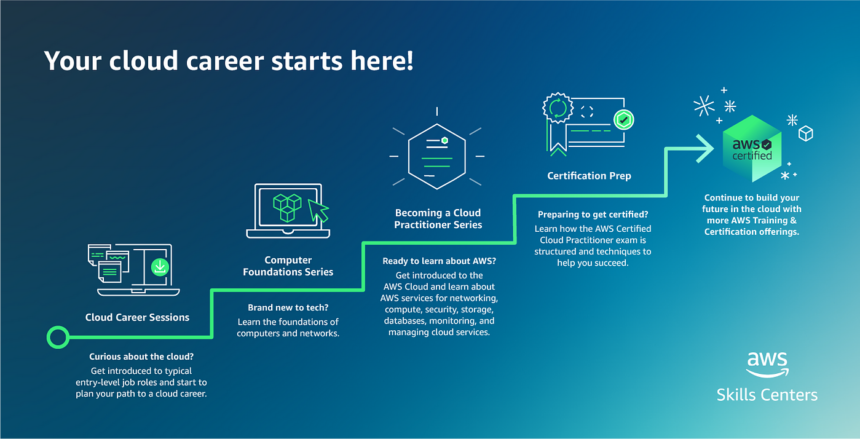In today’s fast-paced digital landscape, enterprises are relentlessly seeking ways to enhance productivity and agility. The advent of cloud technologies has revolutionised the way businesses operate, with Amazon Web Services (AWS) sitting at the forefront of this transformation. By embracing AWS orchestration, cloud orchestration, companies can harness the power of cloud computing to streamline operations, reduce costs, and facilitate growth. Let’s delve into how mastering AWS cloud orchestration and virtual infrastructure is pivotal to navigating the future of work and achieving enterprise agility.
Understanding AWS Orchestration and Its Business Impacts
AWS orchestration refers to the coordination and management of multiple cloud services and workflows. This systematic approach allows businesses to automate tasks, align processes, and ensure that resources are efficiently utilised. By implementing orchestration, organisations can minimise manual intervention, reduce the scope for errors, and expeditiously respond to market demands.
The strategic significance of cloud orchestration lies in its ability to integrate disparate services into a cohesive ecosystem. Enterprises can leverage such integration to optimise their IT infrastructures, enabling the seamless deployment of applications and the rapid scaling of resources. As a result, businesses can become more adaptive, resilient, and competitive in the modern economic environment.
Leveraging Virtual Desktops for Enhanced Mobility and Security
The shift towards remote and flexible work arrangements has necessitated the adoption of solutions that enable staff to access their work environments from any location. Leveraging virtual desktops is a distinctive approach to meet this need. Virtual desktop infrastructure (VDI) provides a secure and consistent user experience, independent of the physical hardware used to access it.
The use of virtual desktops empowers employees with the flexibility to work from anywhere, at any time, while maintaining high levels of security and control. IT departments benefit from streamlined management and deployment processes, as well as the ability to enforce data protection and compliance policies across the organisation’s digital assets. Consequently, VDI contributes significantly to organisational productivity and safeguards sensitive information in a distributed workforce.
The Role of Virtualization in Enabling Remote Work
Virtualization technology is the cornerstone of modern virtual desktop solutions. By abstracting operating systems and applications from the underlying hardware, virtualization enables the creation of multiple virtual machines (VMs) on a single physical server. These VMs can be tailored to the specific needs of different teams or projects, ensuring that resources are allocated efficiently and cost-effectively.
Moreover, the scalability of virtualised environments means that businesses can adjust their IT capacities in response to fluctuations in demand, without incurring exorbitant costs. This dynamism is crucial in today’s environment, where the ability to quickly adapt IT resources has a direct impact on an organisation’s success.
Seamless VMware Cloud Migration: A Gateway to Hybrid Cloud Flexibility
For many businesses, transitioning to the cloud is not a simple endeavour. Existing workloads, particularly those running on VMware, represent considerable investments in time, expertise, and capital. A smooth vmware cloud migration is vital for preserving these investments and realising the benefits of a hybrid cloud environment.
Migrating VMware-based workloads to AWS allows businesses to retain the familiarity of VMware tools and processes while gaining the advantages of cloud computing. This includes increased elasticity, disaster recovery options, and access to a broad array of services that can complement or augment existing applications.
Understanding the Hybrid Cloud Approach
The hybrid cloud is an IT architecture that incorporates a combination of on-premises, private cloud, and public cloud services with orchestration between the two platforms. By leveraging a hybrid approach, companies can maintain control over sensitive workloads while tapping into the cost efficiency and scalability of the cloud for less critical applications.
Furthermore, vmware cloud migration is a strategic step for businesses preparing for the future. It enables IT teams to build skills and processes that will support ongoing digital transformation initiatives, ultimately leading to a more innovative and agile enterprise.
Striking the Balance: Integration and Orchestration
Integrating multiple cloud services and legacy systems poses complex challenges. However, by mastering AWS cloud orchestration, businesses can align different platforms to function as a unified whole. Orchestration tools provide visibility across environments, automate workflows, and orchestrate configurations, helping to maintain consistency and reduce operational overheads.
In an ecosystem where applications and services are dispersed across multiple cloud environments, orchestration becomes the linchpin of efficiency and reliability. Properly orchestrated systems can dynamically allocate resources, balance loads, and recover from failures with minimal disruption to the business operations.
Conclusion
As we navigate the future of work, the imperative for businesses to build robust, flexible, and scalable IT infrastructures has never been clearer. Mastering AWS cloud orchestration and virtual infrastructure is a key component for driving enterprise agility and sustaining competitiveness.
Implementing orchestrated cloud environments, leveraging virtual desktops, and planning strategic vmware cloud migrations are all crucial steps on the path to a highly responsive and accessible digital workplace. By taking these steps, enterprises can equip themselves to thrive in the ever-evolving business landscape of tomorrow.
Today’s business leaders must look ahead and integrate these transformative technologies into their strategic plans. The future of work is here, and it is being built on the foundations of AWS orchestration, cloud technologies, and virtualization.





